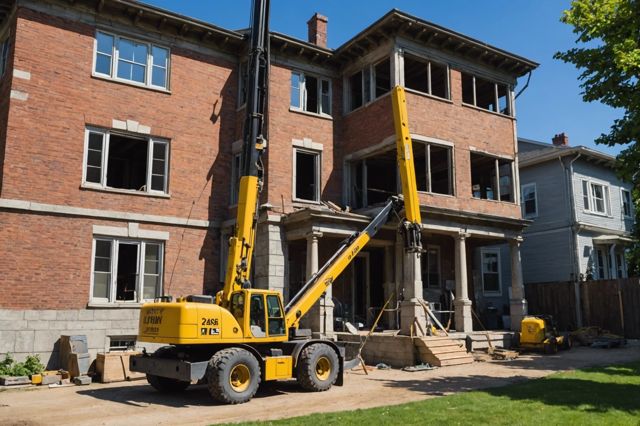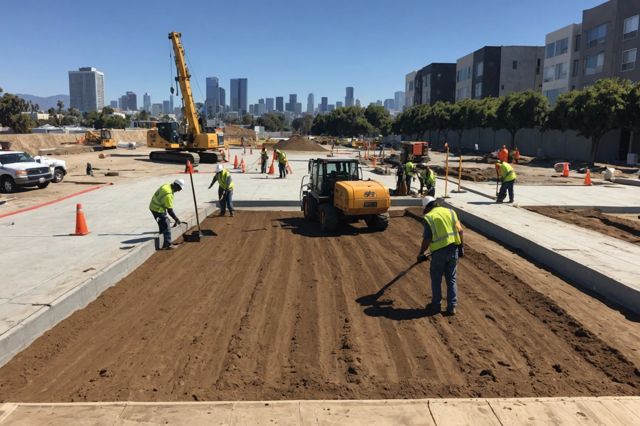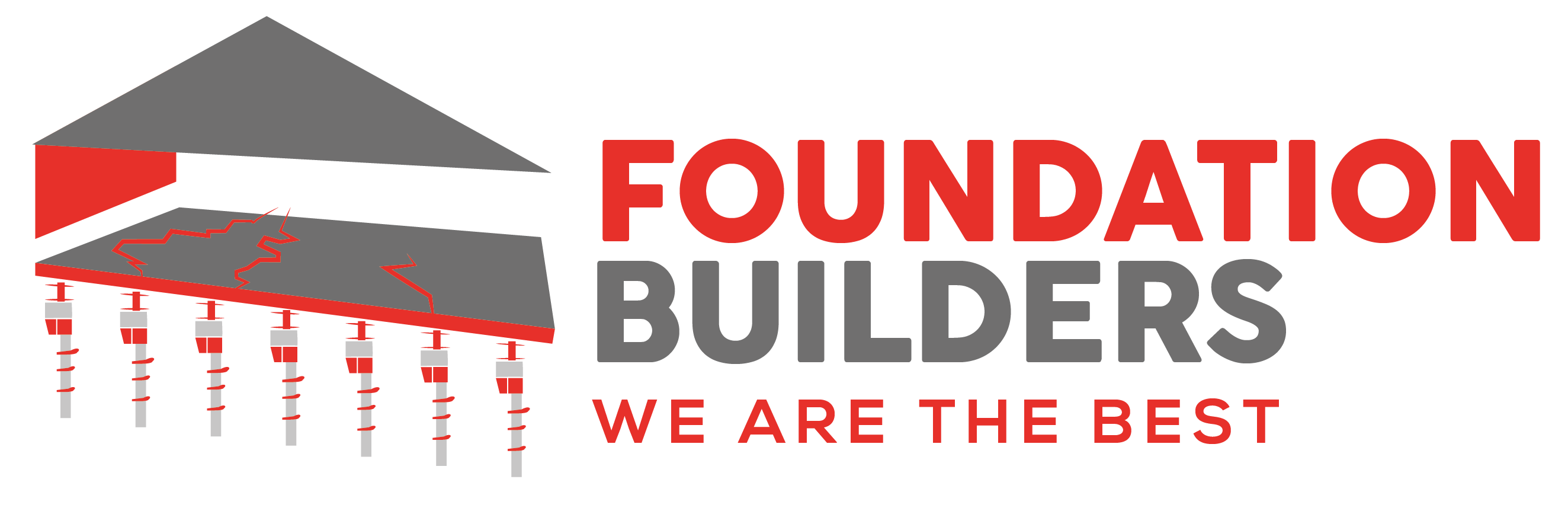To level a house for foundation replacement, first conduct a thorough evaluation of the existing foundation, looking for typical signs such as uneven floors and cracks. Next, utilize professional leveling methods such as hydraulic jacking or pier and beam adjustment to ensure the structure is horizontally stable before replacing the foundation.
1. Understanding Foundation Leveling in Los Angeles
Foundation leveling is crucial for maintaining the structural safety of buildings, especially in Los Angeles where earthquakes are common. This process adjusts the foundation of a building to ensure it is completely horizontal.
- Seismic Activity in Los Angeles: The area is prone to earthquakes due to the movement of the Earth’s plates. These seismic events can cause significant damage to structures that are not properly designed or maintained.
- Importance of Seismic Design: Incorporating seismic design principles is vital for the health, safety, and security of building occupants. Buildings that are designed to withstand earthquakes often fare better against other natural disasters like blasts or strong winds.
- Key Principles of Seismic Design:
- Multi-hazard design: Ensures buildings are capable of handling various types of disasters.
- Performance-based requirements: These requirements help buildings maintain their integrity during and after an earthquake.
- Collaborative design team: Involves multiple experts to ensure all aspects of seismic safety are considered.
- Seismic Design Strategies:
- Use of diaphragms, shear walls, braced frames, and moment-resistant frames to strengthen the structure.
- Installation of energy-dissipating devices and base isolation systems to reduce the impact of shockwaves.
- Economic Impact: Earthquakes in the U.S. lead to significant financial losses, with direct damages averaging $1 billion annually and indirect costs exceeding $2 billion due to business interruptions.
For insights into how seismic events can affect foundations specifically in Los Angeles, you might find this article on Earthquake-Ready Foundations in Los Angeles helpful. Understanding these elements is essential for anyone involved in building and maintaining properties in earthquake-prone areas like Los Angeles, ensuring that structures can protect both people and investments.

2. Signs Your Los Angeles Home Needs Leveling
- Recognizing when your Los Angeles home needs leveling is key to maintaining its structural integrity. Signs of a foundation issue can include:
- Uneven floors that may feel sloped or bumpy.
- Cracks in walls, especially over doorways, windows, or where walls meet ceilings.
- Doors and windows that stick or won’t close properly.
- Visible gaps in mortar joints or between walls and the floor or ceiling.
- Several factors can cause foundational shifts, including:
- Natural settling of the house over time.
- Improperly backfilled soil under the foundation.
- Expansive soils that swell or shrink due to moisture changes.
- Tree roots growing too close to the house, potentially drying out and shifting the soil.
- Addressing these issues quickly is vital to avoid more severe damage. If you notice these signs, consulting with a foundation specialist can save you time and money in the long run. House leveling might involve techniques like slab jacking, pier and beam adjustment, or hydraulic jacking, depending on the specific problem and foundation type.
For a more comprehensive look at the common signals of needing foundation work in your home, check out Common Signs of Foundation Damage which elaborates on the signs and appropriate responses.
- After leveling, it’s important to implement prevention strategies. Regularly check for moisture issues and keep an eye on soil conditions around your home to prevent future foundation problems.
3. Step-by-Step Guide to Leveling Your House
- House leveling, also known as foundation_rep…

4. Preparing for Foundation Replacement in Los Angeles
Preparing for a foundation replacement in Los Angeles involves several crucial steps tailored to the unique environmental and regulatory conditions of the area:
- Site Evaluation: Begin with a thorough survey to identify potential issues like existing structures, vegetation, or uneven terrain. This ensures that the foundation will be built on a stable and suitable site.
- Soil Testing: Conduct soil tests to determine its type, moisture content, density, and load-bearing capacity. This helps in understanding how the soil will interact with the foundation.
- Ground Preparation: Clear and shape the site according to project specifications. Address any areas with soft or loose soil by excavating and refilling them with stable material, then compact it to achieve the required density.
- Subgrade Preparation: Prepare the subgrade, which is the native soil layer that supports the concrete slab. Ensure it is consistent and compact to prevent future settling.
- Local Building Codes: Adhere to Los Angeles building codes, which include specific regulations on soils and foundations to ensure safety and compliance. Familiarize yourself with these codes to avoid legal issues and ensure structural integrity.
- Moisture and Water Flow: Evaluate the landscape’s natural water flow patterns. This step is crucial to prevent future water damage and to ensure the longevity of the foundation.
- Design Adjustments: Based on the insights from soil behavior predictions, adjust the foundation design or implement necessary measures like soil stabilization.
- Installation of Moisture Barriers: Install moisture barriers to protect the foundation from water damage, which is a common issue in Los Angeles due to its climate.
- Concrete Pouring: After preparing the site and ensuring all checks are in place, proceed with pouring the concrete. Ensure the formwork is clean and set correctly before pouring.
- Curing: Allow the concrete slab to cure properly, which is vital for achieving the desired strength and durability of the foundation.
For more detailed information on foundation replacement, visit Foundation Replacement. If you’re considering a foundation project, don’t hesitate to schedule a Free Inspection with our experts at Foundation Builders.

FAQ
What is foundation leveling and why is it crucial in Los Angeles?
Foundation leveling is the process of adjusting a building’s foundation to ensure it is completely horizontal. This is particularly crucial in Los Angeles due to the city’s susceptibility to earthquakes, which can damage structures that aren’t properly designed or maintained.
What are the principles of seismic design mentioned in the article?
The key principles of seismic design include:
- Multi-hazard design that prepares buildings for various types of disasters.
- Performance-based requirements to maintain building integrity during seismic events.
- Collaborative efforts involving multiple design experts to enhance seismic safety.
How can seismic design strategies benefit buildings in earthquake-prone areas?
Seismic design strategies benefit buildings by incorporating structural enhancements like diaphragms, shear walls, braced frames, and moment-resistant frames, along with energy-dissipating devices and base isolation systems that minimize the impact of earthquakes.
What economic impact do earthquakes have in the U.S.?
Earthquake-related damages in the U.S. lead to significant economic costs, with direct damages averaging approximately $1 billion annually. Indirect costs exceed $2 billion due to factors such as business interruptions.
What are common signs that a Los Angeles home needs leveling?
Signs indicating the need for leveling include uneven floors, cracks in walls (especially over doorways and windows), doors and windows that do not close properly, and visible gaps in mortar joints.
What could be causing foundational shifts in homes?
Factors that can cause foundation shifts include natural settling over time, improperly backfilled soil, changes in moisture affecting expansive soils, and tree roots altering soil stability near the foundation.
What are key considerations when preparing for foundation replacement in Los Angeles?
Key considerations include conducting a thorough site evaluation, performing soil tests, preparing the ground and subgrade appropriately, adhering to local building codes, managing moisture and water flow, designing based on soil behavior predictions, and installing moisture barriers.
What steps are involved in the concrete pouring phase of foundation replacement?
During the concrete pouring phase, ensure the site and formwork are prepared correctly, followed by pouring the concrete. After pouring, allowing the concrete slab to cure properly is crucial for achieving the desired strength and durability of the new foundation.

